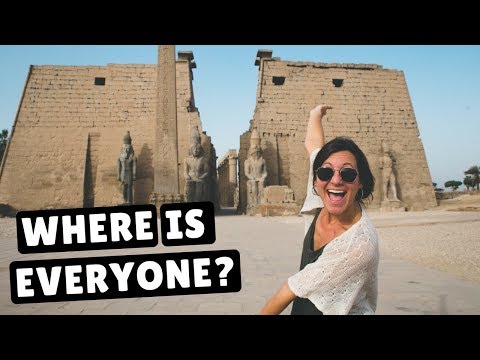
Nestled on the east bank of the Nile River, Luxor, often hailed as the world’s greatest open-air museum, stands as a testament to the grandeur of ancient Egyptian civilization. Among its most celebrated attractions are the Luxor Temple and the Valley of the Kings, each telling tales of divine kingship and elaborate afterlife beliefs that have fascinated scholars and travelers alike for centuries. This travel vlog will take you through these historic sites, uncovering their mysteries and highlighting essential tips for your visit.
#### Luxor Temple: A Monument to The God Amun
The Luxor Temple, primarily dedicated to Amun-Ra, a chief deity in ancient Egyptian religion, isn’t just a place of worship but also a symbol of royal and divine legitimacy. As you step into this sacred complex through the imposing entrance known as the First Pylon, you can’t help but be awed by its grandiosity and architectural prowess.
Our journey inside reveals a succession of courtyards and colonnaded halls, including the massive Courtyard of Ramses II and the elegant Colonnade Hall initiated by Amenhotep III. As your vlog guide, I ensure we linger around to admire intricate hieroglyphics that detail religious festivals like Opet—an annual celebration that symbolized the rejuvenation of kingship.
**Travel Tip:** Visit during early morning or late afternoon to avoid the heat and crowds. The lighting during these times also provides excellent opportunities for photography.
#### Nighttime Magic at Luxor Temple
One cannot miss experiencing Luxor Temple at night when it’s beautifully lit up—a surreal experience enhancing its majestic facade and detailed carvings. As we stroll through under soft lights casting dramatic shadows, it’s easy to imagine pharaohs of old walking these very grounds.
#### Journey West: Valley of the Kings
Crossing over to the west bank where lies modern-day Luxor’s necropolis areas, our vlog takes an adventurous turn toward the famed Valley of the Kings. This burial site for pharaohs such as Tutankhamun and Seti I is a labyrinthine network of tombs carved deep into rocky cliffs.
As we descend into several tombs (not all are open to public), our camera captures vividly painted walls depicting scenes from Egyptian mythology meant to guide kings in their afterlife journey. The highlight here is undoubtedly Tomb KV62—Tutankhamun’s resting place discovered virtually intact in 1922 by Howard Carter.
**Travel Tip:** Buy your tickets early in the day as visits are restricted to preserve these ancient artworks. Consider purchasing an additional pass for King Tutankhamun’s tomb—it’s well worth it!
#### Practical Tips for Travelers
– **Getting There:** While there are various modes of transport within Luxor (cabs or horse-drawn carriages), consider hiring a bike for up-close explorations along Nile-side roads lined with antiquity.
– **Climate Considerations:** With daytime temperatures soaring high especially from May through August, ensure you’re amply hydrated and dressed appropriately.
– **Cultural Sensitivity:** When visiting sacred sites like temples or tombs, modest clothing is advised; shoulders and knees should be covered.
#### Wrapping Up Our Journey
Our travel vlog concludes as we reflect on our journey back at our Nile-facing hotel balcony—the stories etched within these ancient stones compelling us to ponder about life during those mystical times. Whether it’s walking amid colossal statues at Luxor Temple or exploring underground tombs in Valley of Kings—Luxor offers an unforgettable voyage back through time.
For anyone enchanted by history or intrigued by mysterious past worlds, this segment on Egypt’s timeless treasures promises not just insights but also inspires awe towards human heritage that has withstood millennia.
